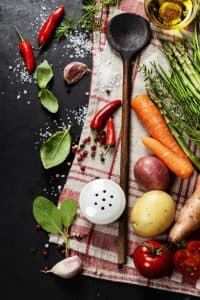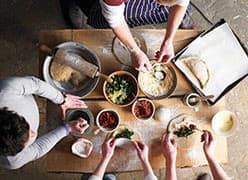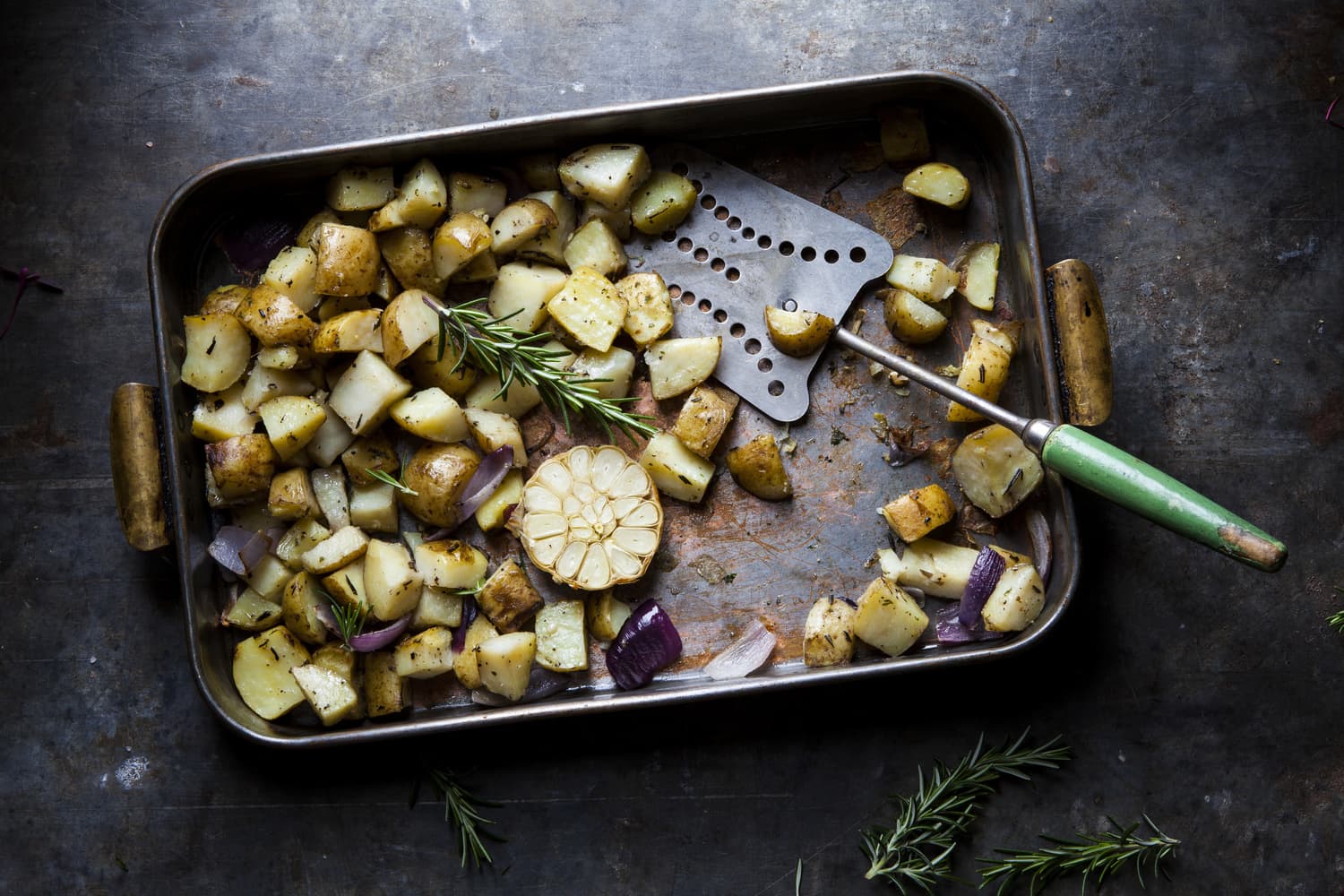She was having a nightmare.
She found herself surrounded by darkness except for a lone door that glowed faintly before her. On that door was a single word carved deeply into the wooden panel: PANTRY. Scared, but curious, she turned the handle to walk inside when an object suddenly appeared in front of her. It was a potato. Before she could think, there they were: potatoes of every kind filling the pantry shelves. Idaho potatoes, sweet potatoes, yukon golds, russets, fingerlings, reds and purples – what was she going to do with these potatoes? Mash them, fry them, hot soup, cold salad, how should she prepare and serve them? And should she peel them before she boils them? Should she slice them before she roasts them? Which potato should she even choose in the first place?
As if in response to her thoughts, the potatoes whispered mockingly in unison,
“It all depends. How much starch will you need?”
That pushed her over the edge.
“Not the starch!” she screamed. “Please, ask me about anything except the starch!”
Wake up. You’re not in a nightmare, you’re just in the kitchen. And standing in the kitchen, there is one question we must all eventually ask ourselves: “To cook, or not to cook?”
At first, it sounds like an easy answer. You can’t cook, even if you wanted to. It’s understandable – you’re awkward and clumsy and you don’t know the difference between a banana and a brussel sprout. You’re not a cook, you explain. It’s not your thing. You’ve tried, and failed. You just can’t cook.
Unfortunately, the biggest problem with telling yourself you can’t do something is that you’ll actually start to believe it.
That’s why Hudson Table, and our new blog, are here to show you the possibilities of a different path. We are here to destroy your self-doubt and prove how capable you can become in the kitchen. We want to show you how much happiness a little confidence can give you. We’ll teach you how to think like a chef but we’re not training you how to cook in restaurants. There’s already plenty of extraordinary schools for that. What we want to do is to teach you how to cook for life. We want to ignite that fire inside of you and we want you to use that fire to cook. But by far the most important thing we want is to make sure you have fun along the way.

This blog will be a supplement to that. Throughout this blog we will explore the joys and drawbacks of both decisions – the immense pleasures of cooking, the occasional joy of not cooking, and everything in between. We’ll travel around the world, explore the cuisines of diverse regions and countries, from Japan, to New Orleans, to Israel; we’ll teach you various techniques, share recipes, discuss the best kitchen tools, tell you about our favorite places to eat for every occasion, and share with you who we are, how we got here and where we’re going.
Of course, don’t be fooled by our wisdom. We have an abundance of experience and knowledge but we certainly don’t know everything. We are on the same adventure as you are and the best teachers never stop being students. Talk to us, question us, challenge us, force us to grow and we promise we’ll do the same for you.
 Make no mistake, you’re going to get dirty in the kitchen. It’s going to test you. That’s good. Together we will begin a type of culinary guerrilla warfare. Patience and persistence. Revolt against your hesitation. Read, learn, try, fail, try again, and repeat. With a few glasses of wine to warm the body and a few new friends to warm the soul, it’s going to be okay. There are many factors that may have prevented you from beginning, fear being the main one – and to that we say: Don’t be so afraid of that potato – or put another way: be afraid, but cook the damn thing anyway.
Make no mistake, you’re going to get dirty in the kitchen. It’s going to test you. That’s good. Together we will begin a type of culinary guerrilla warfare. Patience and persistence. Revolt against your hesitation. Read, learn, try, fail, try again, and repeat. With a few glasses of wine to warm the body and a few new friends to warm the soul, it’s going to be okay. There are many factors that may have prevented you from beginning, fear being the main one – and to that we say: Don’t be so afraid of that potato – or put another way: be afraid, but cook the damn thing anyway.
We’ll see you in the kitchen.
Baked Potatoes
by Mark Bittman, How to Cook Everything
4 large starchy potatoes, like Idaho or other russets
Salt and freshly ground black pepper
- Heat the oven to 425 degrees F. Scrub the potatoes well, especially if you plan to eat the skins. Use a skewer or a thin-bladed knife to poke a hole or two in each potato.
- Put the potatoes in the oven, right on the rack if you like, or on a rimmed baking sheet. The potatoes are done when a skewer or sharp knife inserted into one meets almost no resistance. (You can turn them once during baking, though it’s not necessary.)
- The potatoes will stay hot for a few minutes. To serve, cut a slit lengthwise into each about halfway into the flesh and pinch the ends towards the middle to fluff, sprinkle with salt and pepper, then top.
- Some ideas for toppings:
- Butter, sour cream, and/or minced chives.
- Grated cheese, like cheddar, Parmesan, Asiago, or Jack
- Crumbled cooked bacon, sausage, or chorizo

